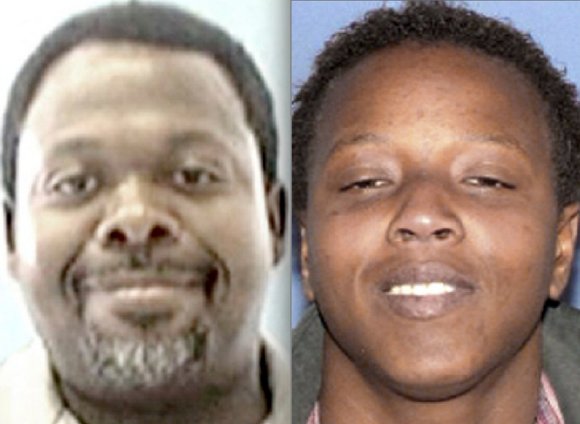Justice Dept. forces Cleveland police reform
Free Press wire reports | 5/29/2015, 8:05 a.m. | Updated on 5/29/2015, 11:04 a.m.
Can a police officer fire 15 shots into a car with two unarmed people inside and then be acquitted of criminal charges after their deaths?
The answer is yes.
Can another police officer get out of his vehicle and, two seconds later, fatally shoot a 12-year-old boy who has a pellet gun in his waistband — and not face swift arrest and prosecution?
The answer again is yes.
Both lethal incidents involved white Cleveland police officers involved in the fatal shootings of African-Americans. Critics point to both incidents as evidence of an out-of-control Cleveland police department that is targeting black citizens with excessive use of force.
On Tuesday, the city of Cleveland and the U.S. Department of Justice announced an agreement on reforming the city’s troubled 1,500-member police department that includes improved training and policies on use of force and more sensitivity in dealing with the mentally ill.
The agreement, which must be approved by a federal court judge, also calls for creation of a community police commission that is to recommend practices to minimize racial bias, accountability and transparency in policing.
The announcement came just days after a Cleveland judge last Saturday acquitted white police Officer Michael Brelo of manslaughter charges in the 2012 fatal shooting of Timothy Russell, 43, and Malissa Williams, 30, after a high-speed car chase. The couple was not armed.
Officer Brelo fired 15 shots into the car at point-blank range after leaping onto its hood. He was among 13 officers who fired 137 bullets at the couple during the 22-minute chase that involved more than 100 officers.
Police officers said they thought the couple was firing at them, but it was eventually found that gunfire-like sounds were from the couple’s car backfiring.
Officer Brelo’s acquittal touched off several days of protests in Cleveland that have resulted in the arrest of more than 70 people.
The reforms of the Cleveland police department were outlined in a 105-page consent decree filed in federal court.
“It will define who we are as a people and who we are as a city,” Cleveland Mayor Frank Jackson said at a news conference announcing the agreement.
“As we move forward, it is my strong belief that other cities across this nation address and look at their police issues in their communities, they will be able to say, ‘Let’s look at Cleveland because Cleveland has done it right,’ ” he added.
Local NAACP officials said they would be reviewing the agreement “with a fine-tooth comb.”
Michael Nelson, co-chairman of the Cleveland NAACP’s Legal Redress and Criminal Justice Committee, said it is important that there be “bona fide community participation” on the community police commission, particularly people independent of city officials and agencies. He said the agreement also should acknowledge that race has been an issue in Cleveland policing and that such bias be combated.
The agreement comes just five months after the federal Justice Department issued a scathing 58-page report in December showing “systemic deficiencies” in the Cleveland Division of Police.
The report was the result of a 21-month federal investigation of the department and painted a portrait of rogue officers pulling their guns and firing at suspects without justifiable cause, of beating defenseless suspects already in handcuffs, of dealing too forcefully with the mentally ill and of covering up their actions by failing to write accurate police reports or not write them all.
Cleveland has a 53 percent African-American population. About two-thirds of its police officers are white. The mayor and police chief are African-American.
In the case of couple killed by police, Judge John O’Donnell said he couldn’t determine who fired the fatal shots in acquitting Officer Brelo of two counts of voluntary manslaughter.
Judge O’Donnell also ruled that Officer Brelo acted responsibly during the incident because he reasonably feared for his life.
Also on Saturday, the head of the Cleveland police department’s civil rights division said the agency was conducting a separate review of the Brelo case to determine “what, if any, additional steps are available and appropriate.”
The city is still awaiting results of a probe into last November’s fatal shooting of 12-year-old Tamir Rice, who was fatally shot by rookie Cleveland Officer Timothy Lohmann.
Officers were summoned to a municipal park and playground by reports that Tamir was pointing a gun at others. The child turned out to have a toy handgun that fires plastic pellets. It was tucked in his pants when Officer Lohmann drove up, jumped out of his police car and began firing.
No decision has been made on whether Officer Lohmann will be prosecuted in Tamir’s death.
The city also is waiting to see if police officers will be charged in the death of 37-year-old Tanisha Anderson, a mentally ill woman who died of suffocation in November 2014, after police slammed her to the pavement and handcuffed her.
A member of Ms. Anderson’s family called police to report that she was disturbing the peace.
Ahead of Tuesday’s announcement, more than 200 protesters peacefully demonstrated outside Cleveland City Hall chanting Tamir’s name, along with those of Mr. Russell and Ms. Williams, and singing “We Shall Overcome.”
The Justice Department has launched broad investigations into the practices of more than 20 police agencies in the past five years, including those in Ferguson, Mo., and Baltimore.
Former U.S. Attorney General Eric Holder said in December that the Justice Department had intervened in 15 police departments in the country, including eight that are operating under court-ordered consent decrees.







